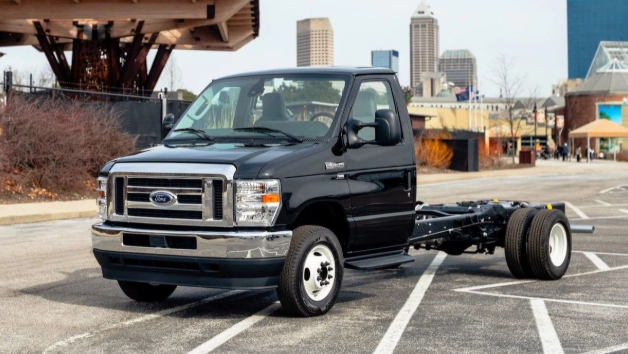 Motortopia Staff
.
July 14, 2025
.
Press Release
Motortopia Staff
.
July 14, 2025
.
Press Release

That fleet electrification math you’re avoiding? Let’s do it.
If your fleet is already doing its job—and doing it well—it’s hard to stomach the idea of buying brand-new EVs just because they’re electric. Your current trucks or vans aren’t next-level, but they’re reliable. At least you know exactly what to expect.
But recently, your accountant (or the city regulations office, or your CEO) has dropped hints about going electric. Spoiler alert: Converting your existing vehicles to electric is cheaper than buying new. A lot cheaper. And it doesn’t just save you money—it saves you headaches, downtime, and all the hidden costs no one mentions.
So, let’s put aside the guesses and talk about the real costs of EV uplift compared to EV conversion. You’ve got questions—we’ve got answers (and some surprisingly good news).

“EV uplift” refers to buying a brand-new electric vehicle and then modifying or outfitting it to fit your specialized fleet needs. Maybe you’re running refrigerated trucks, ambulances, utility vans, or food trucks. Each of these vehicles requires special equipment, from custom refrigeration units to hydraulic lifts.
The sticker shock on new electric vehicles alone is already pretty substantial, often starting from around $70,000 to upwards of $120,000 for commercial and specialty vehicles. But then, the uplift—the actual modifications—can easily add another $10,000 to $60,000+ per vehicle, depending on your specific setup.
Upfit Types
Suddenly, your budget spreadsheet is giving everybody at the company acid reflux.
And it’s not just the cash. Delivery timelines are brutal—sometimes you’ll wait 12 months or more. So, unless your fleet can survive on patience, conversion is something to seriously consider.

On the other hand, EV conversion involves taking your existing fleet vehicles—those reliable, already-paid-for vans and trucks—and retrofitting them with electric motors, batteries, and controllers. No dealer backlogs, no factory-level premium markups, and best of all, you keep vehicles you already know and trust.
You’re effectively cutting your total spend nearly in half, with actual improvements in performance and capability.
And since you already know the condition and history of your current fleet, there’s less mystery, fewer surprises, and a quicker turnaround—often just weeks instead of months.
Buying new vehicles is complicated and it doesn’t just end when the check is signed or your financing goes through. New training for your mechanics. New operational processes. New downtime as your team adjusts. With conversions, you bypass most of that.
Plus, electric vehicles are famously low-maintenance—saving fleets roughly 30–50% on operational costs over time. No more oil changes. No more gas. No more exhaust repairs.
If your business cares about going green (or at least, likes to look like it cares), EV conversion ticks multiple green boxes. Throwing out perfectly good vehicles just to buy shiny new EVs is simply bad math. When you convert, you extend the life of your current fleet by years, possibly decades.
There’s no better green credential than breathing new electric life into your trusted, existing fleet. Your customers’ll appreciate that narrative.
Municipalities and fleets are already catching on. Take schools: One California school district saved nearly $1 million by converting diesel buses to electric instead of buying new.
Similarly, delivery companies, construction fleets, and emergency services see huge savings by converting existing vehicles, especially when those vehicles are equipped with expensive specialty equipment. You’ve invested serious money and customization into your fleet—why throw it away just because electrification is on the table?

Electric corporate fleets aren’t an idea out of a science fiction novel; they’re the future of business, being written by those daring enough to embrace it.
EV uplift may sound tempting, shiny, and modern—but the math and logistics often just don’t add up, especially for specialized and high-utilization fleets.
EV conversion, meanwhile, delivers real savings, faster turnaround, reduced operational headaches, and a genuinely greener, smarter approach to electrification.
Your fleet is your business backbone. Converting rather than buying new is simply more cost-effective: it’s pragmatic, practical, and perfectly suited to real-world operations. So, stop fearing the math and start embracing the conversion.
Your fleet—and your budget—will thank you later.
Share Link